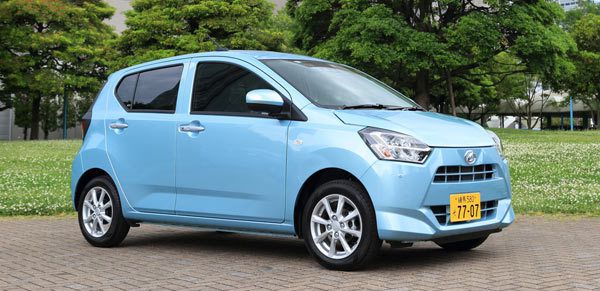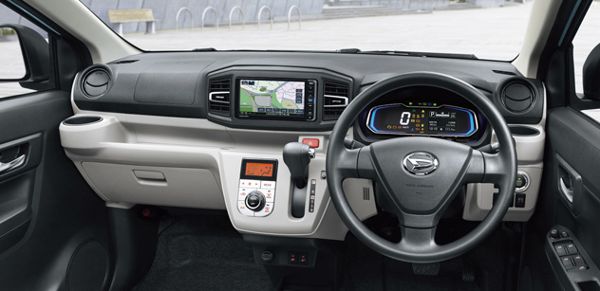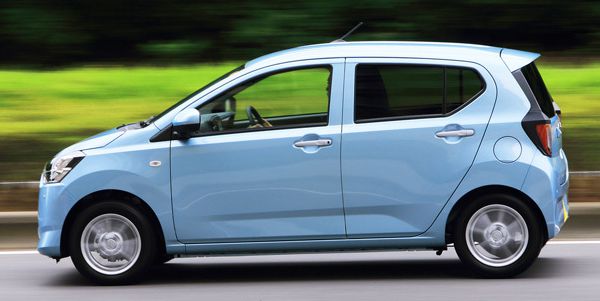Published
on 10
Oct 2021
|
All rights reserved.
|
|
|

|
|
The
cheapest car you can buy in Japan, with looks and dynamics to match.
|
|
Mira e:S is positioned at
the bottom of Daihatsu’s product range. Staring at only 850,000 yen
(equivalent to US$7600), it is the cheapest car you can buy in Japan
alongside Suzuki Alto.
While many K-cars pursue increasing features and versatility, this car
returns to the roots of K-cars, i.e. providing a basic transport for
people who could not afford regular cars. The first generation Mira e:S
was introduced in 2011. Apart from being cheap to buy, it was also
extremely economical to run. By cutting all unnecesary weight, friction
and drag, and by using an Atkinson-cycle engine, it achieved the
highest fuel economy of any K-cars. That's why it is named e:S, which
stands for eco & smart.
The second generation keeps this development direction. Its drag
coefficient is reduced by a further 3 percent. Weight is cut by another
80kg, which accounts for more than 10 percent of the car's kerb weight,
remarkably. And this is achieved without resorting to advanced
materials. How did it do that? By using more high-strength steel in its
monocoque body, by using thicker gauge panels to replace multiple
parts, by using resin to construct its front fenders and tailgate, by
lightening its brakes, steering and suspension components
strategically. As a result, the car weighs just 650 kg, sounds like
taking us back to the early 1970s, when safety and emission regulations
were yet to come into force. For your record, it is almost 200kg
lighter than a Honda N-One. That said, Suzuki Alto remains the
lightweight champion at 610 kg in manual gearbox form.

|
|
It
serves your basic needs and no more.
|
|
As for cost savings, I guess Daihatsu took the
if-it-ain't-broke-don't-fix-it approach. While all body panels and
interior moldings are practically new, their shapes and architecture
are very close to the old car, so Daihatsu can reuse many mechanical
parts lying underneath the sheet metal and plastic molding. On the
downside, this means the Mira e:S looks a bit outdated, especially when
the old design was already quite boring. Daihatsu's designers try to
inject some excitement with edgy headlights, fascia and a BMW-style
kick at the C-pillar. Somehow, the car looks a bit, well, cheap. More
like something designed for developing countries. Facing the funky and
design-led Alto, I think it is difficult to attract younger drivers.
The pursuit of low costs and simplicity means the rear seat can fold
but not slide. Rear legroom is a bit tight compared with other K-cars.
 |
|
Painfully
slow and lots of roll in corner.
|
|
The Atkinson-cycle motor is another weak point. Carried over from the
old car, it produces only 49 horsepower and 42 pound-foot of torque,
considerably lower than Suzuki (52hp / 46 lbft) or Honda (58hp / 48
lbft). Even though the car is light, it feels very slow on the road.
There is no turbo option either, as the car is set to be a basic
vehicle. Daihatsu's CVT has a rather linear response, but not
sufficient to compensate for the lack of power and mid-range torque.
As for handling and ride, it is designed for strictly urban commute.
Turn faster, the front end rolls alarmingly, blame to the lack of
anti-roll bar. That said, it does ride softer and quieter than the
Suzuki. This softness is well matched to its weak powertrain and the
overall unexciting character. Just don't expect it offers anything more
than your basic needs.
|
Verdict:  |
|